One
EARLY MANITOWOC-BUILT VESSELS
Manitowoc had its beginning as a shipbuilding center in 1847, when Capt. Joseph Edwards built a three-masted schooner called the Citizen. Schooners as well as other types of sailing vessels played an important roll in the development of Manitowoc, as well as other ports on the Great Lakes. It was reported that by 1860 there were 1,855 sailing vessels on the Great Lakes.
In addition to Edwards, there were many other early pioneering shipbuilders in Manitowoc, such as William Bates, Elias Sorenson, Henry and George Burger, Jonah Richards, Greenleaf Rand, Jasper Hanson, Peter Larson, Mads Omes, Gunder Jorgenson, and Capt. Francis P. Williams. One of the most famous and influential schooner builders at that time was William Bates. Bates designed and built a faster and more slender schooner similar to the trim China Clippers. Thus Manitowoc became known as the “Clipper City.” The last schooner to be built on the Great Lakes was built in Manitowoc. It was a three-masted schooner called Cora A. built by Burger and Burger in 1889.

This 1870 photograph shows the Manitowoc schooner C. L. Johnston, which was built by Manitowoc’s E. W. Packard Shipyard. (P82-37-8-91.)

The Corona was built at the G. S. Rand Shipyard in Manitowoc between 1869 and 1870. It was built for Manitowoc’s Goodrich Transportation Lines at a cost of $42,000. The Corona was the first Goodrich boat built for service on the eastern shore of Lake Michigan. In 1892, it was sold to John W. Warde of Chicago for $7,500. The boat was later used as an excursion steamer on Lake Erie. In 1898, it was destroyed in a fire while at the dock in Tonawanda, New York. (P82-7-6.)

The side-wheeler Sheboygan, called the “Queen of Lake Michigan,” was owned by the Goodrich Lines and built by G. S. Rand in 1869. The Rand Yard was located on the north side of the river above the Tenth Street Bridge. This area later became Wisconsin Central Railroad’s warehouses and carferry docks. This photograph was taken before 1890, as Goodrich had changed the color scheme of its boats to all black hull and paddle boxes at that time. The elk horns mounted between the stacks and the American Indian brave atop the walking beam indicate that the Sheboygan had won certain races held between passenger steamers. After a long and successful life, the side-wheeler was scrapped in 1914 by running it aground and burning it along the Manitowoc River. (P82-37-7-118.)

The Goodrich side-wheeler Muskegon is underway all decked out in evergreen branches, which were common decorations on Great Lakes steamers in November and December. The Muskegon was a popular passenger vessel in the late 1800s. The boat is bearing its new Goodrich color scheme, adopted in 1890, with a black hull and paddle boxes. A heavy plume of black smoke can also be seen. The Muskegon was destroyed in 1896, when its support blocking gave way in a Milwaukee dry dock. (P82-37-7-10.)

The Larson Shipyard was located at the west end of Shipyard Point in Manitowoc. The Northern Grain Elevator A would later occupy this location. The three closest vessels in this photograph are the St. Maries, the Lotus, and the Dayan. (P82-37-7-38.)

The 505-ton Goodrich steamer Oconto was built by Manitowoc’s G. S. Rand Shipyard in 1872 at a cost of $42,204. Stacks of cedar shingle bundles are waiting to be loaded aboard the vessel. The Oconto became an institution and household word among the west shore ports of Lake Michigan that it served for many years. It was sold in 1883 for $13,500. (P82-37-7-45.)

The 796-ton Goodrich Lines package freighter Menominee was built by Manitowoc’s G. S. Rand in 1872. A year later, the passenger cabin was added. The boat ran for many seasons on the Cross-Lake Route serving Muskegon and Grand Haven, Michigan, as well as Chicago. In 1896, it was dismantled and the hull and machinery provided the basis for construction of the ill-fated Great Lakes steamer Iowa. (P82-37-7-144.)

The schooner C. C. Barnes, which was built by Manitowoc’s H. Burger Shipyard in 1873 is shown after running aground south of Milwaukee Harbor in May 1894. The tug Carl is attempting to pull this 582-ton schooner free. (P82-37-2-22.)

The U.S. Revenue cutter Andrew Johnson is being rebuilt in this 1881 photograph. The photograph was taken near the Eighth Street Bridge on the Manitowoc River’s south bank in Manitowoc. (P82-37-7-54.)

The propeller De Pere was built by Manitowoc’s G. S. Rand Shipyard in 1873 for the Goodrich Line. The De Pere is pictured here in 1885 unloading passengers and package freight onto the lake ice just off the coast from Manitowoc. The vessel was a popular steamer in Milwaukee because it offered moonlight cruises on Lake Michigan. In 1891, it was sold to the firm of D. S. B. Grummond in Detroit. (P82-37-9-16.)

The 304-ton lumber hooker A .D. Hayward was built by Burger and Burger of Manitowoc in 1887. (P82-37-7-152.)

The schooner Oscar Newhouse, with a load of barrels of vinegar, is tied up at the foot of north Ninth Street in Manitowoc. In 1915, it was fitted with an auxiliary gasoline engine that enabled it to continue operation as a lumber hooker until it burned on the St. Mary’s River in 1927. In its final days, during Prohibition, it was used to run liquor from Canadian ports to the United States. (P82-37-4-15.)

The schooner Harvey C. Richards was built by the Burger Shipyard in Manitowoc in 1873. It is shown being towed into port by the Goodrich tug Arctic, which was built by Manitowoc’s G. S. Rand Shipyard in 1881. (P82-37-9-62.)

The 842-ton steamer City of Ludington was built by Manitowoc’s G. S. Rand in 1881, at a cost of $60,000. It was designed for year-around service on the Cross-Lake Route between Ludington, Michigan, and Milwaukee. The vessel was one of the first steamers on the Great Lakes to be lit by electricity. It was rebuilt and lengthened in 1898 and renamed Georgia. The flag flying on its stern dates this photograph between the vessel’s 1898 conversion and 1907. (P82-37-129.)

This photograph shows the 1888 launch of the 261-ton lumber hooker steamer Mark B. Covell. It was built by Burger and Burger in Manitowoc and rebuilt in 1909. In 1936, it returned to Manitowoc to be scrapped and burned. (P82-37-7-9.)

The Goodrich steamer Racine was built by H. B. and G. B. Burger at Manitowoc in 1889, at a cost of $125,000. This photograph shows it leaving for trials in June 1889. It was a splendid example of ship styling at the time. In 1909, it was rebuilt and renamed the Arizona, and at the end of its career it was left to rot away. (P82-37-7-12.)

The launching of the schooner Cora A. took place in 1889 in Manitowoc. Burger and Burger built the Cora A. for the Chicago Transportation Company, and it was among the last schooners to be built on the Great Lakes. It worked on the Great Lakes until 1913, when it began working on the East Coast. The schooner sank in a storm off of North Carolina’s Cape Hatteras in 1916. (P82-37-7-136.)

The steamer John E. Hall was launched at Manitowoc in 1890 at the Samuel Hall Shipyard. It was originally built for Timothy Donovan, and it sank on Lake Ontario in 1902 with a loss of nine lives. (P82-37-7-85.)

The 417-ton wooden lumber hooker steamer Francis Hinton was built at Hanson and Scove Shipyard at Manitowoc in 1889. (P82-37-7-100.)

The schooner S. M. Stephenson is on keel blocks and ready for launching at the Rand and Burger Shipyard in 1880. Its owner was William Burns. (P82-37-7-108.)

Manitowoc’s Burger and Burger Shipyard built the steamer City of Racine in 1889. In 1909, it was rebuilt and re-boilered at the Manitowoc Shipbuilding Company. With a completely new profile, it was renamed the Arizona, and it operated as a passenger steamer for the Goodrich Line until 1926. (P82-37-9-13.)

In 1890, Burger and Burger delivered the newly built City of Marquette to its owner, the Hill Steamship Line of Kenosha, Wisconsin. It is shown here tied up at the south end of North Ninth Street in Manitowoc. (P82-37-8-138.)

Built by H. B. and G. B. Burger in 1890, the Goodrich steamer Indiana receives a fresh coat of paint. In 1915, the Indiana was cut apart, re-boilered, and lengthened 22 feet. Manitowoc Shipbuilding Company performed this work in its graving dock in Manitowoc. The Indiana ceased operation as a passenger boat in 1928 and converted into a powerhouse and hotel for workers deepening the St. Mary’s and Detroit Rivers. (P82-37-7-77.)

The lumber hooker Edward Buckley was built by Manitowoc’s Burger and Burger Shipyard in 1891. It is shown in Sault Ste. Marie, Michigan, with a full load of pulpwood. (P82-37-8-39.)

The tug George Cooper was built by Manitowoc’s Burger and Burger Shipyard in Manitowoc in 1891. (P82-37-8-57.)
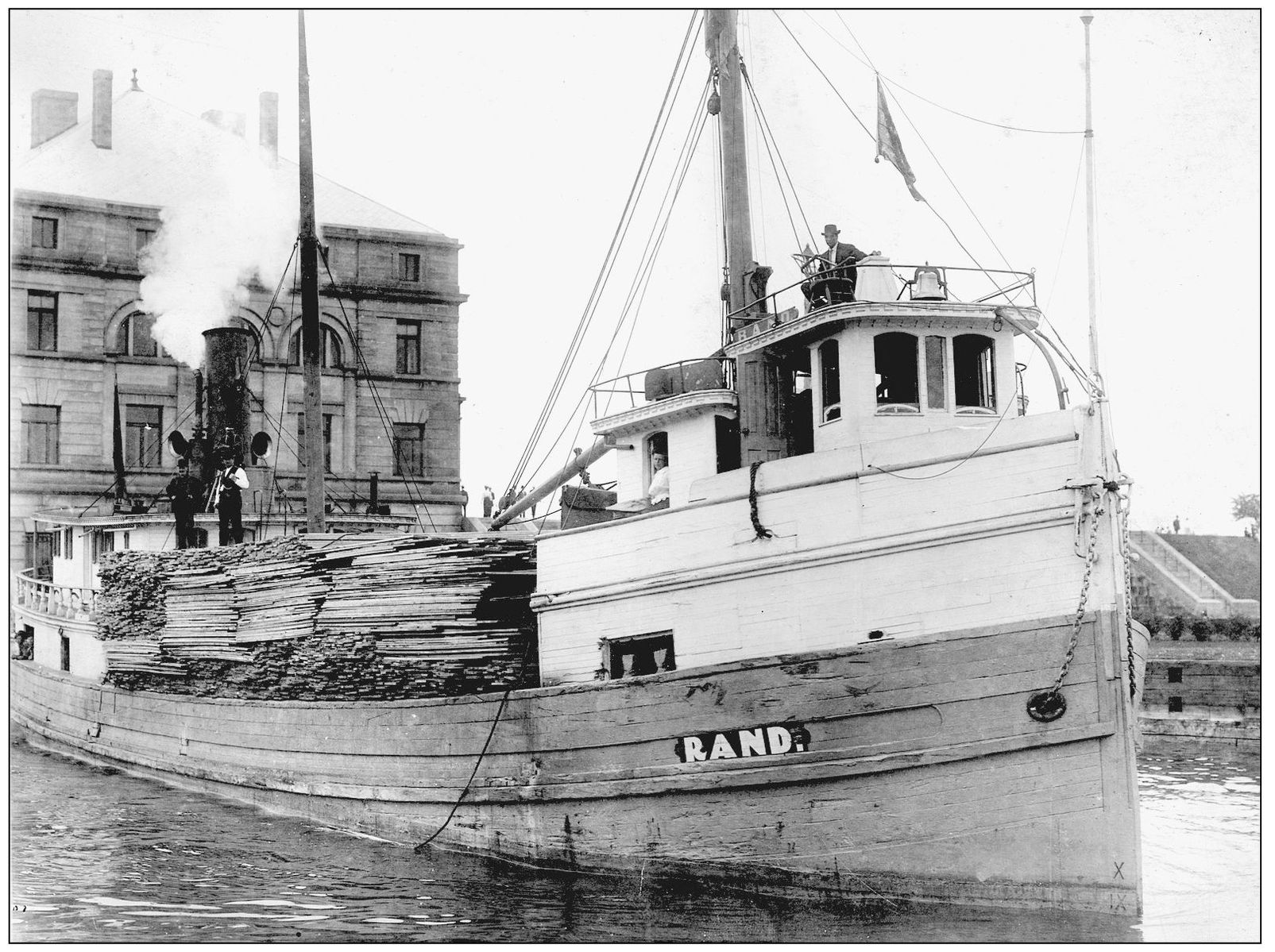
Manitowoc’s Burger and Burger Shipyard built the lumber hooker Rand in 1887. Here it is shown at Sault Ste. Marie, Michigan, with a full deck load of lumber. (P82-37-8-37.)

This 1920 photograph shows the steamer Sydney O. Neff of Chicago, Illinois, battling windrows of ice. It was built by Manitowoc’s Burger and Burger Shipyard in 1894. (P82-37-8-149.)

The steamer Sydney O. Neff is shown covered with ice after a fierce winter passage in 1899. (P82-37-8-157.)

Manitowoc’s Burger and Burger Shipyard built the steamer Fannie C. Hart in 1888. It was launched as a bulk freighter and later deepened to become a combination passenger and package freighter, as seen in this photograph. It operated primarily on Lake Michigan out of Green Bay, Wisconsin. The vessel left the Great Lakes in 1910 and finished its life in saltwater service. (P82-37-8-12.)

This 1899 photograph was taken looking upriver at the State Street Bridge in Manitowoc. The bridge was built in 1897 as a pedestrian crossing and provided Manitowoc’s north-side workers easy access to the shipyards. The whaleback passenger steamer Christopher Columbus may be seen beyond the bridge. Sunk to the left of the Columbus is the steamer D. F. Rosé. On top of the hill sits the Schuette mansion, which serves as a funeral home as of 2005. The standpipe along the skyline to the right is the city water tower. (P82-37-7-147.)

The steamer Iowa is shown here leaving the Manitowoc Harbor. It was built by Manitowoc’s H. B. and G. B. Burger in 1896. Iowa was caught by running block ice in the Chicago harbor and sank with a total loss of ship and cargo. The passengers and crew saved themselves by walking over the ice to shore. (P82-37-7-21.)

The 52-ton Goodrich Lines tug Arctic is shown entering the Manitowoc Harbor with a group of young ladies on the foredeck. Manitowoc’s Rand and Burger Boatyard built it in 1881 for Goodrich at a cost of $16,015. The Arctic was designed for winter operations and icebreaking in the Milwaukee Harbor, but summer found it busy working in Manitowoc Harbor. In 1919, it underwent a complete rebuild at the Manitowoc shipyards. The vessel was abandoned in 1930 after serving 49 years, the longest continuous service record of any boat that sailed under the Goodrich flag. (P82-37-7-35.)
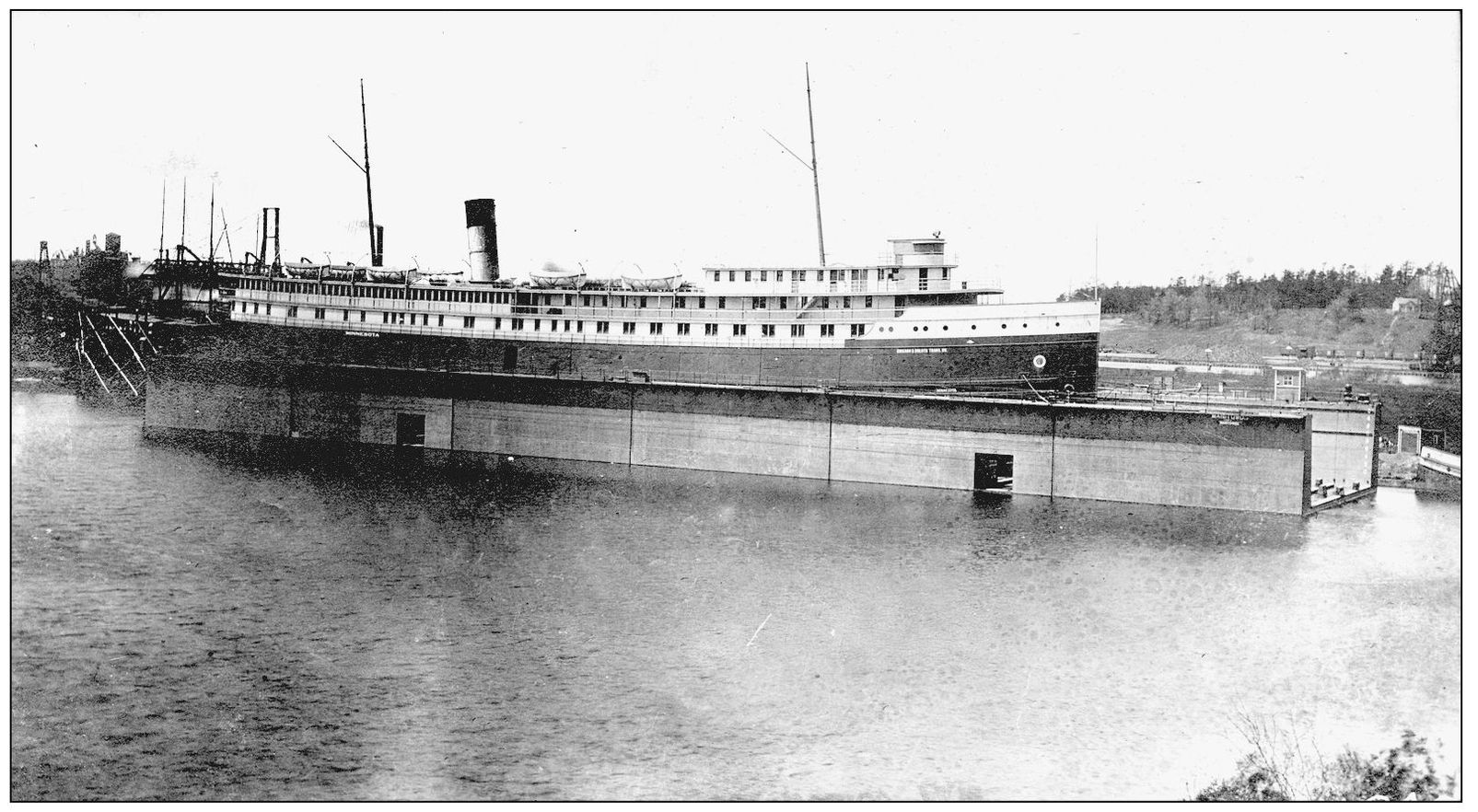
Owned by the Chicago and Duluth Transportation Company, the Minnesota sits in dry dock at the Manitowoc Shipbuilding Company’s Berth B some time between 1910 and 1917. (P82-37-6-63.)

This 1900 winter scene of the lower Manitowoc River was taken from the Eighth Street Bridge looking toward Lake Michigan. (P82-37-7-145.)

The Goodrich Lines side-wheel steamer Chicago and the remains of the side-wheeler Muskegon can be seen in this 1904 photograph of the upper Manitowoc River. Manitowoc’s G. S. Rand Shipyard completed the Chicago in 1874. In 1916, Goodrich dismantled the steamer and sold the hull and upper works to the Manitowoc Shipbuilding Company, which used it as a dining hall and sleeping quarters for shipyard workers. In 1871, G. S. Rand also built the side-wheeler Muskegon in Manitowoc. It was wrecked in the Milwaukee Dry Dock Company’s dock in 1896, when the blocking accidentally collapsed. The three schooners in the photograph are the Isolda Bock, the Oscar Newhouse, and the Libbie Carter. (P82-37-7-137.)

Launch of the passenger steamer Chequamegon took place in 1903. Burger and Burger began construction of the steamer, but the yard was sold to the Manitowoc Shipbuilding Company while construction was under way. As a result, the Chequamegon became Hull No. 1 for the Manitowoc Shipbuilding Company. (P82-37-8-120.)
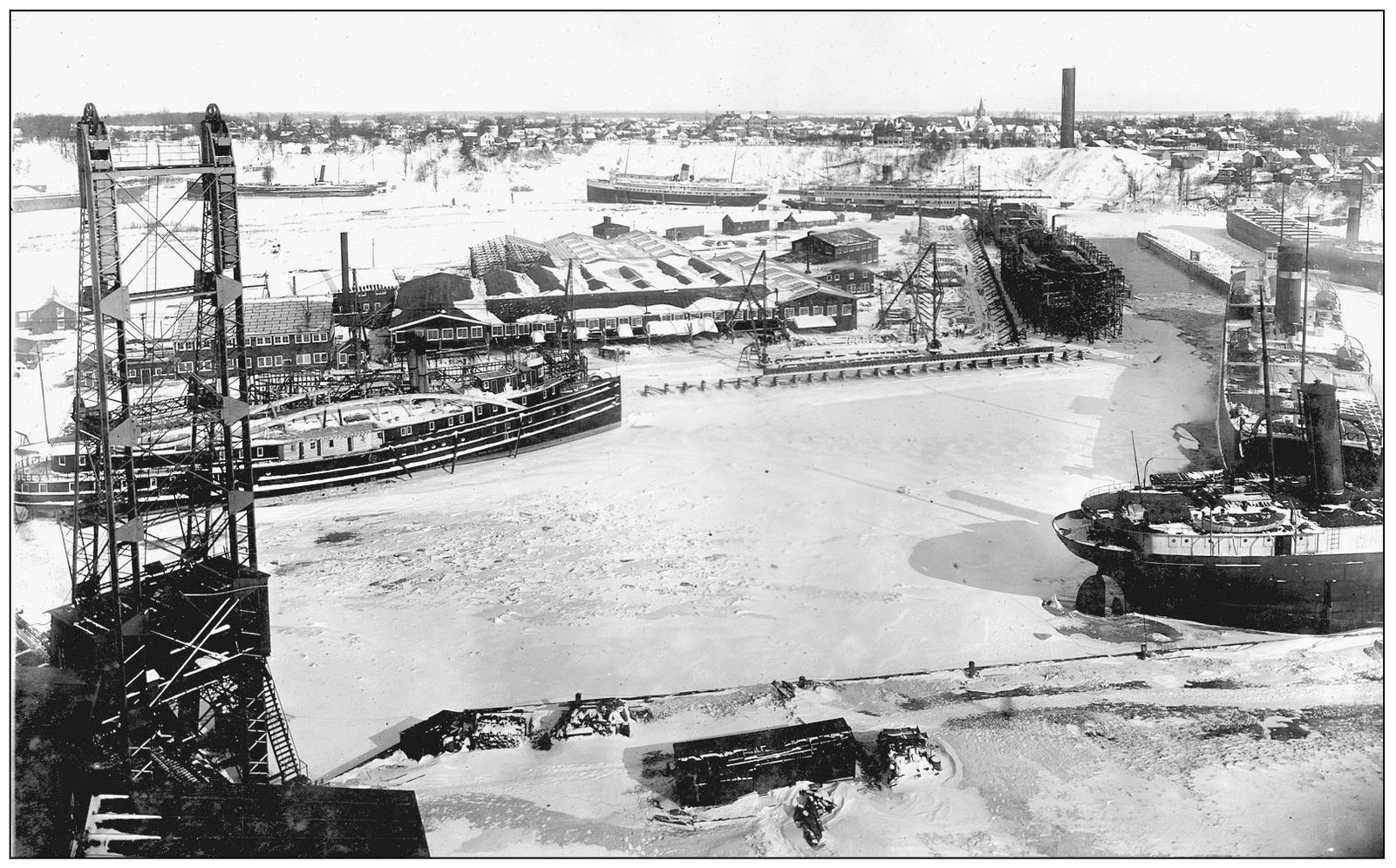
This 1916 photograph was taken from the roof of Northern Grain Elevator A. The picture shows the Manitowoc Shipbuilding Company, the lifting tower of the Soo Line Railroad lift bridge, and the Goodrich Transportation Company’s side-wheeler Chicago, which the Manitowoc Shipbuilding Company purchased after its useful life had ended. The side-wheeler’s paddle wheels have been removed so it can be used as a dining hall and sleeping quarters for shipyard workers. Four swivel cranes may be seen alongside Berth A and a traveling bridge crane at Berth B. (P82-37-8-143.)
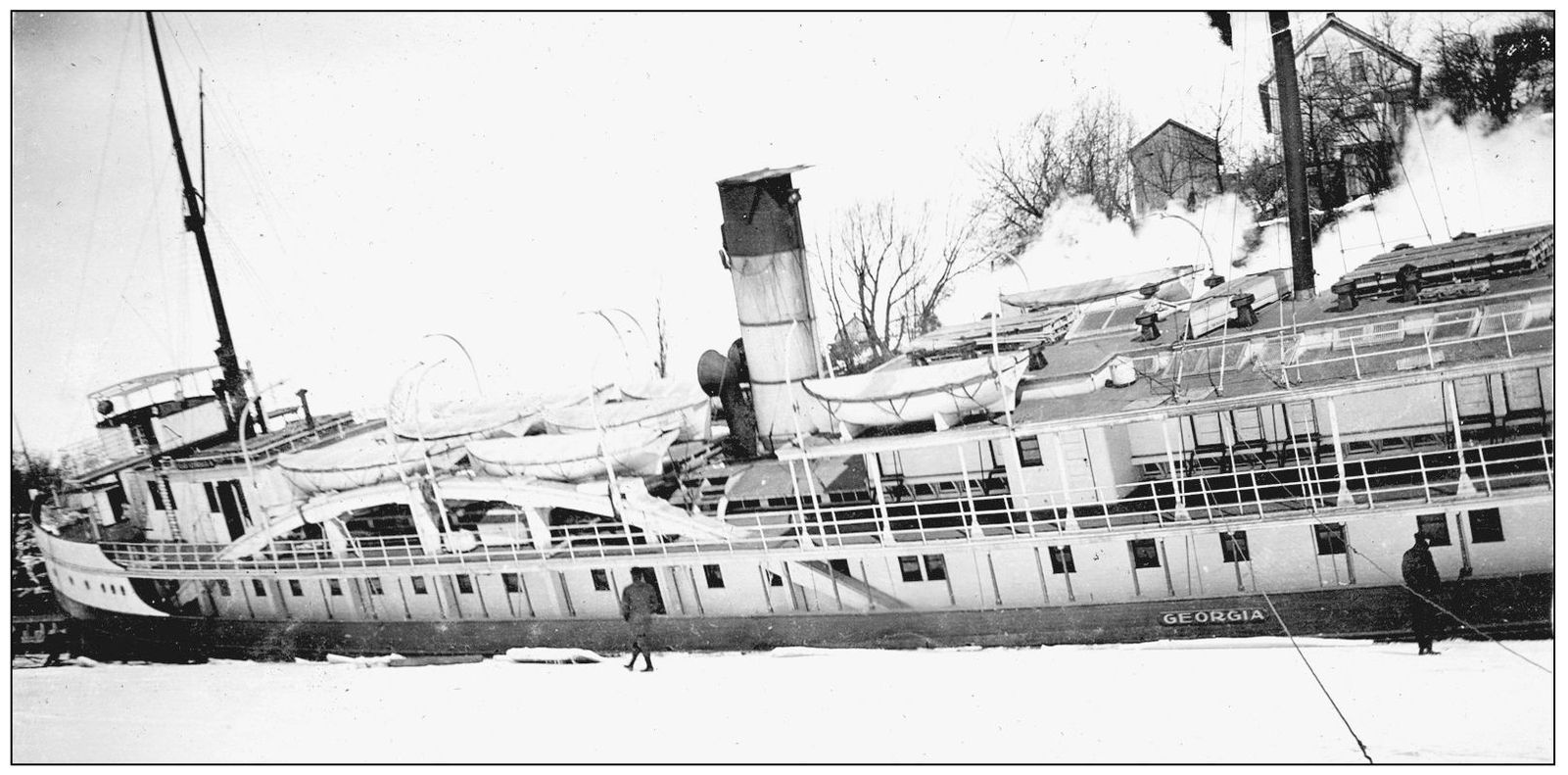
This 1920 photograph shows the Goodrich Lines steamer Georgia sitting on the bottom of the Manitowoc River after ice has pulled the caulking from its planking. Later that year, it was sold to Milwaukee’s Crosby Transportation Company of Milwaukee, and it continued to operate as a steamer until 1924. The Georgia was finally condemned and sunk off Green Bay, Wisconsin’s Summer Island, to serve as a breakwater. (P82-37-9-11.)

Former flagship of the Graham and Morton Line, the steamer Grand Rapids joined the Goodrich fleet in 1925. Here it is shown tied up at the Goodrich maintenance dock on the east bank of the Manitowoc River near Tenth Street. The American Shipbuilding Company built the vessel at their Cleveland yard in 1912. It had a gross tonnage of 3,061 and survived until 1952, when it was scrapped in Hamilton, Ontario. (P82-37-1-29.)

In 1893, the C. C. Barnes was dismasted in a squall on Lake Michigan and grounded on South Fox Island. The tug Monarch towed it to Manitowoc and is shown here assisting the schooner into the Lehigh coal dock to unload its cargo before being re-masted and sparred at Manitowoc’s Rand and Burger Shipyard. (P82-37-7-22.)
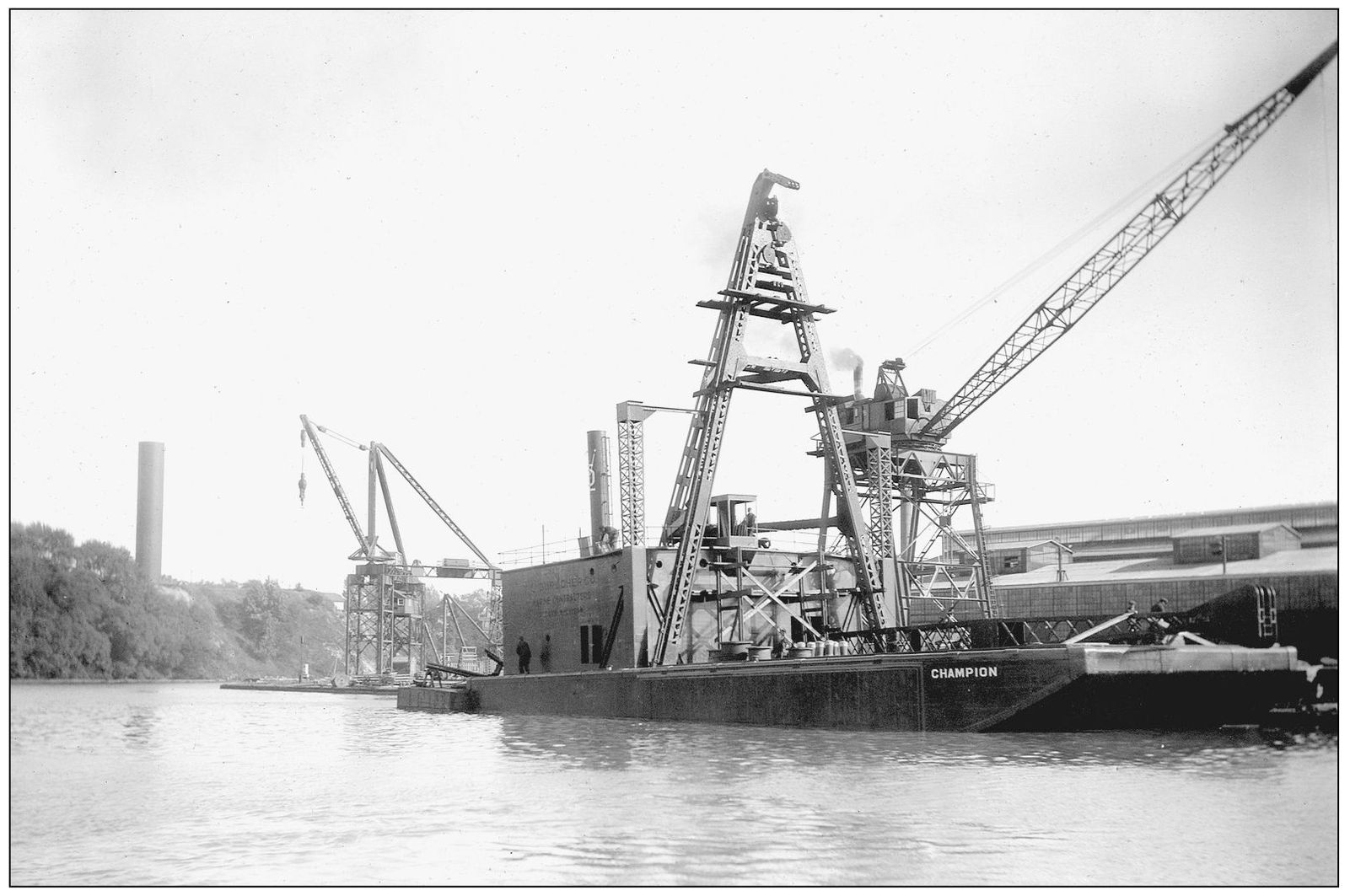
The derrick scow Champion was launched in 1929 from Manitowoc Shipbuilding Company’s Berth D. Also shown in this photograph are the shipyard’s stiff-leg crane and the water tower. (P82-37-1-30.)

The sand sucker American is shown tied up at Manitowoc Shipbuilding Company’s Berth D. Directly behind in the photograph is an Ann Arbor carferry. The white stern of the boat entering the dry dock on the left is that of the U.S. Coast Guard cutter Escanaba. (P82-37-5-58.)

The White Swan readies for its 1922 launch at Manitowoc’s Burger Boatyard. The fancy work and name existed only on the vessel’s starboard side at the time this photograph was taken. (P82-37-9-79.)

At the time of the White Swan’s 1922 launch, the Burger Boatyard was located on the opposite side of the Manitowoc River from the Manitowoc Shipbuilding Company. The vessel was built for John Schuette, who owned Manitowoc’s Oriental Milling Company. This photograph also shows the schooner Alice nearly ready for launching as well. (P82-37-9-35.)

This 1936 photograph shows the scrapping of the famous Goodrich Line whaleback steamer Christopher Columbus. For many years, it made daily excursion runs between Milwaukee and Chicago. The vessel was also a familiar sight in the Manitowoc harbor because it wintered there between 1898 and its final lay-up between 1932 and 1936. The docking facilities for the Goodrich Line were in the same area where the Wisconsin Maritime Museum now is located. (P82-37-1-9.)

The tanker Red Crown is under construction in Berth D at the Manitowoc Shipbuilding Company. The famous carferry Chief Wawatam is shown on the left. The Alabama can be seen in dry dock being reconditioned for its new owner Earl G. Kirby. Kirby put the Alabama to work on the Cleveland to Isle Royale route. (P82-37-5-104.)
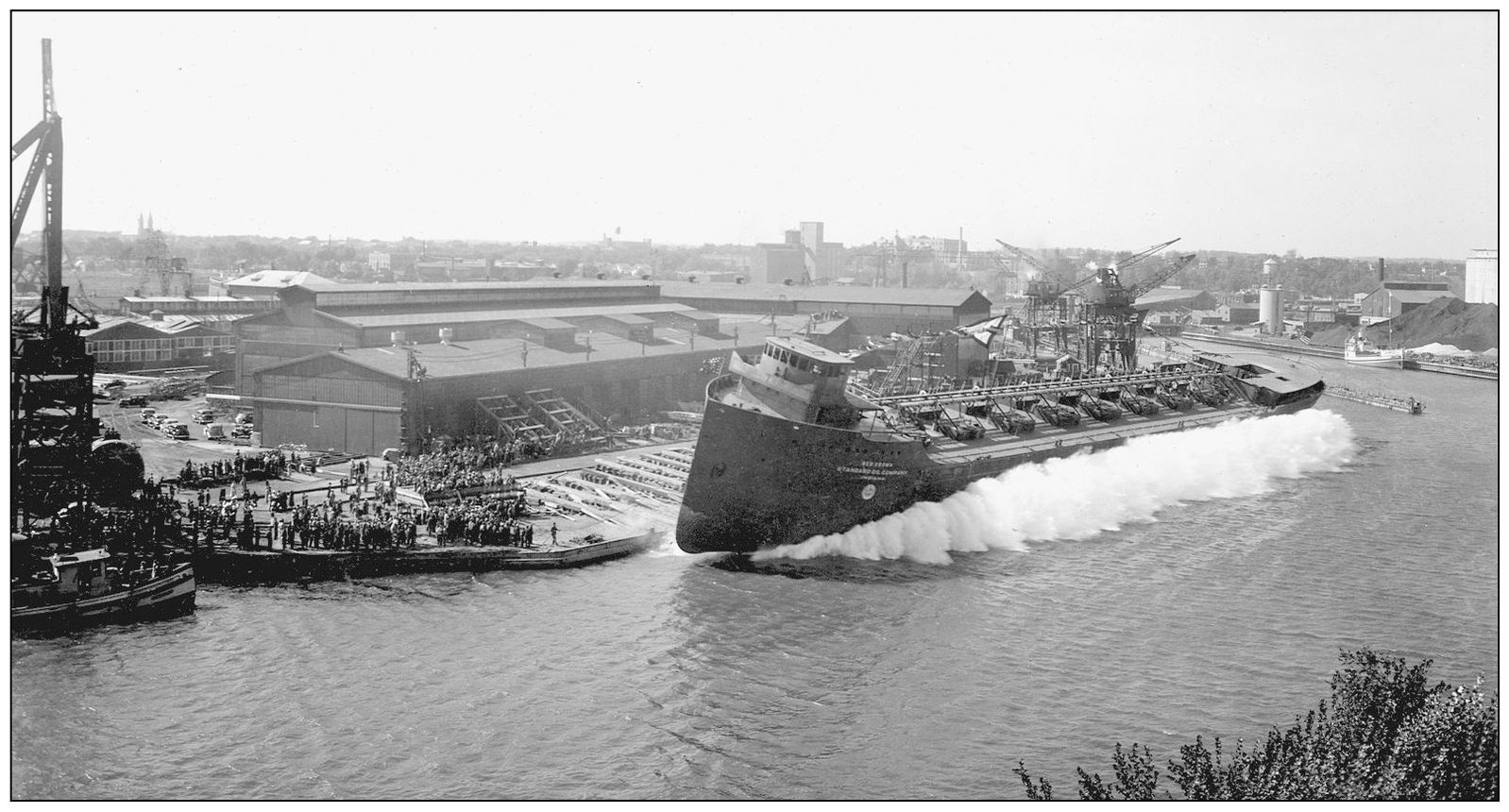
The Red Crown (Hull No. 292), an oil tanker built for the Standard Oil Company, was launched from Manitowoc Shipbuilding Company’s Berth D in 1937 and was later renamed Amoco Indiana. In 2005, it still served the port of Manitowoc as a cement barge named St. Mary’s Conquest. (P82-37-1-32.)